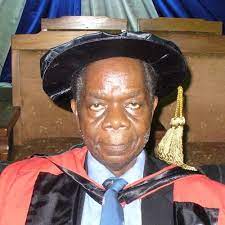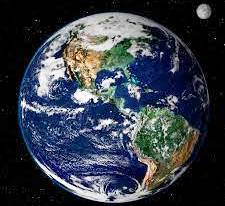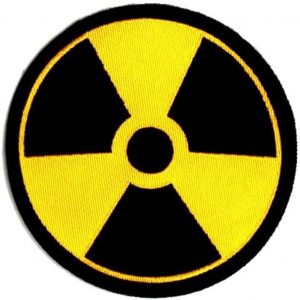A Nuclear Power Plant (NPP) applies heat from a controlled nuclear chain reaction – in the Core of its reactor – to produce steam which drives its turbine and generates electricity.
The government of Nigeria approved a nuclear framework for the country to generate electricity from nuclear energy for national development under President Olusegun Obasanjo in 2007.
This involves:
- Manpower development which is ongoing in energy centres in Zaria, Ile-Ife and some universities as well as in the National Institute of Radiation Protection and Research in the University of Ibadan offering Masters degree and Postgraduate diploma in radiation protection;
- Site selection, Design, Approval and Licensing; and finally,
- Construction and Operation.
The Siting stage involves 13 criteria ranging from availability of a natural body of water; seismicity, especially how volcano or earthquake-prone the site is; distance to densely populated area; wind direction etc.
Nigeria is at this stage and has two candidate sites, awaiting final approval, for a possible first nuclear power plant for electricity generation.
The International Atomic Energy Agency, IAEA, in 2009, certified Nigeria to have passed the minimum manpower threshold.
However, there are still the design, construction, commissioning stages with all the approvals to go with them.

The focal agency, the Nigeria Atomic Energy Commission, NAEC, was created by Act 46 in 1976 which was later amended in 2004.
NAEC however, became fully operational in July, 2006 with Dr Erepamo Osaisai as its pioneer Chief Executive.
Its function, as operator, is to promote the peaceful use of atomic energy in Nigeria (Nigeria is one of the first countries to sign the Nuclear Non-Proliferation Treaty in 1968).
In March, 2011, NAEC was re-constituted and made more independent with Dr Erepamo Osaisai as Executive Chairman and it vigorously started pursuing the nuclear electricity programme.
The nuclear industry is one of the most regulated in the world with the IAEA at the global level.
In Nigeria, the Nigerian Nuclear Regulatory Authority, NNRA, came into being in May, 2001 created by the Nuclear Safety and Radiation Protection Act (Act 19) of 1995 with Professor Shamsideen Elegba as its pioneer Director-General.
Professor Elegba worked hard to ensure the independence of NNRA, bravely refusing to be placed with the government-owned operators under the Federal Ministry of Science and Technology.
A nuclear regulator must be independent of the operator to avoid conflict of interest.
He also insisted that no stakeholder in the nuclear industry in Nigeria should operate below approved minimum standards.
This led to the commissioning of the 340-kilocurie Cobalt-60 Gamma Irradiation Facility in Sheda, near Abuja, by then Nigerian President Olusegun Obasanjo being postponed slightly, before it was finally licensed by NNRA and commissioned in 2006.
Under Professor Elegba, the NNRA also successfully licensed the 30kw Neutron Research Reactor, the Nigerian Research Reactor (NIRR-1), in the Centre for Energy Research and Training, Zaria, which has been operating without incident or accident since 2004.
All radioactive sources imported into Nigeria are by law returned to the country of manufacture after their useful life (to be recycled or appropriately disposed) before its inventory is closed by the NNRA.
So, there is no real problem of nuclear waste disposal in Nigeria.
Nuclear phobia after the non-peaceful use of atomic energy in the Hiroshima and Nagasaki bombs of World War 11 can be a problem anywhere, not just in Nigeria.
The latest accident in the three Daiichi reactors in Fukushima, Japan, on 11 March, 2011, following a 15-metre-high tsunami, exacerbated the problem.
All nuclear power plants in Japan are built on earthquake-proof technology.
The plant automatically shut down successfully following the earthquake and was not damaged.
Since it no longer generated power, diesel electricity generating sets came on automatically to power the devices that pump water to cool the residual heat in the Cores.
The tsunami that followed however, inundated the area and the generating sets, cutting-off power to the water pumps.
The over-heating that ensued caused a Core meltdown in the three reactors and minor radiation leaks.
The tsunami drowned and killed 15,893 people, but no one died from radiation.
Two plant workers suffered some radiation burns and another 37 suffered physical injuries.
The World Health Organisation in 2014, said there was no increase in miscarriages, still births or physical and mental disorders in babies born after the accident.
The Daini plant with four reactors operated by the same company, Tokyo Electric Power Company, 12 kilometres (7.5 miles) away from the three Daiichi reactors, also automatically shut down on the earthquake but suffered no damage from the tsunami.
The worst accident in nuclear power generation in the world is the fire in Chernobyl Nuclear Power station, a Light Water Graphite reactor, on April 26, 1986 in which about 30 people died, 300 suffered radiation sickness and another 3,000 developed (a mild form of) Thyroid cancer.

The others were in Tokai-Mura in Japan in 1999; Core Meltdown at the Three Mile Island in U. S. in 1979; and the first of such accidents in the world in Windscale, U. K., from an early Plutonium Production reactor in 1957.
These are the only accidents since the first commercial nuclear plant for electricity generation, the APS-1, in Obninsk, Russia, with an output of 5mw, was connected to the national grid on 26 June, 1954.
The Chernobyl plant fell short of requirements as it had only steel roofing, not one-metre thick steel re-enforced concrete or Lead, and cannot be approved today by any regulatory authority.
Furthermore, in the Chernobyl case, one experiment was approved by the Russian regulatory authority just before the accident.
When the expected results were not obtained, the researchers, without another authorization, went on to repeat the experiment and shut down some of the safety devices.
There was overheating and explosion which the Containment Building – a re-enforced concrete/lead structure housing the Core and its protective Pressure Vessel – could not contain, being substandard.
Both Chernobyl and the Tokai-Mura plants were Light Water Graphite reactors which are not being produced again as well as the reactor in Windscale, UK.
More people die in mining, oil exploration and dam accidents to power other sources of electricity than in nuclear incidents in the world.
The burst/failure in Banqiao Reservoir Dam on the Yellow River in China in 1975 killed 171,000 people.
On the average, 15,000 miners are killed every year in the world.
On 28 April, 1942, 1,549 lives were lost in the colliery accident in Benxi, China.
In the US, 362 miners were killed in the underground mine explosion in Monongah, West Virginia, on 6 December, 1907.
Comparatively, nuclear electricity is historically, safer.
Furthermore, nuclear science and technology is not new to Nigeria.
Nigerians have been managing the Research Reactor, NIRR-1, in Zaria, which used fissile Uranium-235 since 2004, without any accident or incident, to the satisfaction of NNRA and IAEA.
Led by the reactor manager, Professor Sunday Jonah, they successfully converted it from using weapon-grade Highly Enriched Uranium (90.2% enrichment level) to Low Enriched Uranium of 13% in 2018.
What is the best way forward?
If Nigeria needs to make a quantum-leap into industrial development, the nuclear electricity option to power that growth may be it.
pictures courtesy: india today, iea











